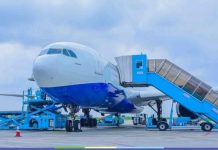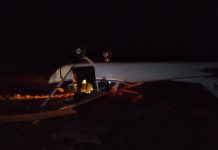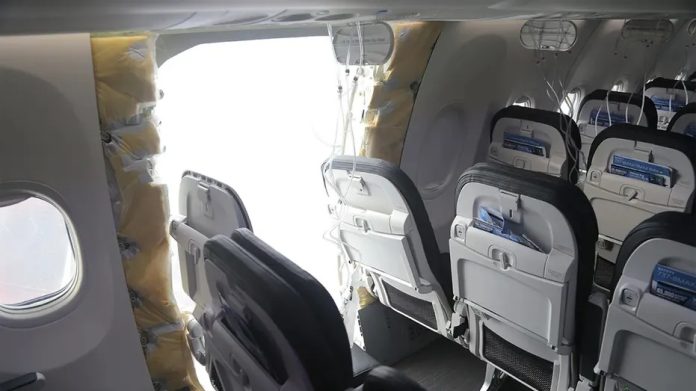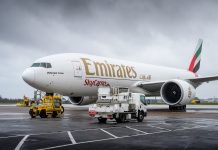The U.S. National Transportation Safety Board (NTSB) has released its final report on the terrifying Alaska Airlines Flight 1282 incident, placing direct blame on Boeing and the Federal Aviation Administration (FAA) for a cascade of critical failures that led to a fuselage panel blowout at 16,000 feet.
The flight, operated by a Boeing 737 MAX 9, had departed Portland, Oregon, on January 5, 2024, bound for Ontario, California, when a loud explosion rocked the aircraft mid-climb. A door plug – an emergency exit-style panel used to seal unused exits – violently detached from the aircraft, causing sudden decompression and leaving a gaping hole near seat row 26. While all 171 passengers and six crew members survived, eight people suffered minor injuries. The cabin filled with noise and chaos, and the cockpit door flew open, adding to communication challenges for the pilots, who quickly donned oxygen masks and made an emergency descent back to Portland.
According to the NTSB report, the incident was caused by Boeing’s failure to provide proper oversight, training, and documentation during aircraft assembly. The panel in question had been opened during manufacturing for rivet repairs but was improperly reinstalled — and crucially, four bolts designed to prevent it from dislodging had never been reattached.
The investigation found that no removal record or quality assurance checks were created to document or verify the panel’s reinstallation. Furthermore, Boeing’s internal work instructions – known as Business Process Instructions (BPI) – lacked clarity and had a decade-long track record of compliance issues that had not been effectively addressed.
In addition to Boeing’s lapses, the FAA came under fire for what the NTSB described as “ineffective surveillance” and inadequate audit systems. The regulator failed to detect Boeing’s repeated manufacturing noncompliance or enforce corrective action despite years of warning signs.
The NTSB also pointed out that the lack of experienced personnel during the manufacturing phase meant that no one with proper knowledge handled the door plug’s reinstallation. Boeing’s on-the-job training was deemed insufficient, especially for non-routine tasks, and its quality control systems lacked the robustness needed to detect human error.
The safety board further noted that Boeing’s voluntary Safety Management System (SMS), which was still being developed when the jet was built, failed to identify risks that could have prevented this quality escape. The NTSB advised that Boeing must improve its safety culture and data monitoring to ensure the effectiveness of the SMS when fully integrated.
The report also raised broader safety concerns across the aviation industry. It urged operators to improve hands-on training for pilots in using different oxygen systems, update cockpit voice recorders to preserve at least 25 hours of data, and mandate child restraint systems for infants to prevent injuries during emergencies.
While Alaska Airlines’ pilots were praised for their composure and quick action, the airline itself was lauded for its strict adherence to safety protocols. AirlineRatings CEO Sharon Petersen said the professional handling of the crisis by Alaska Airlines likely prevented a catastrophe, noting that in less safety-focused hands, the outcome might have been fatal.
In its final analysis, the NTSB described the Alaska Airlines incident as a preventable manufacturing failure rooted in weak oversight, poor documentation, and lapses in regulatory accountability. The findings mark a major setback for Boeing and place renewed scrutiny on FAA oversight — just as both parties face growing global pressure to restore trust in the 737 MAX program.
















